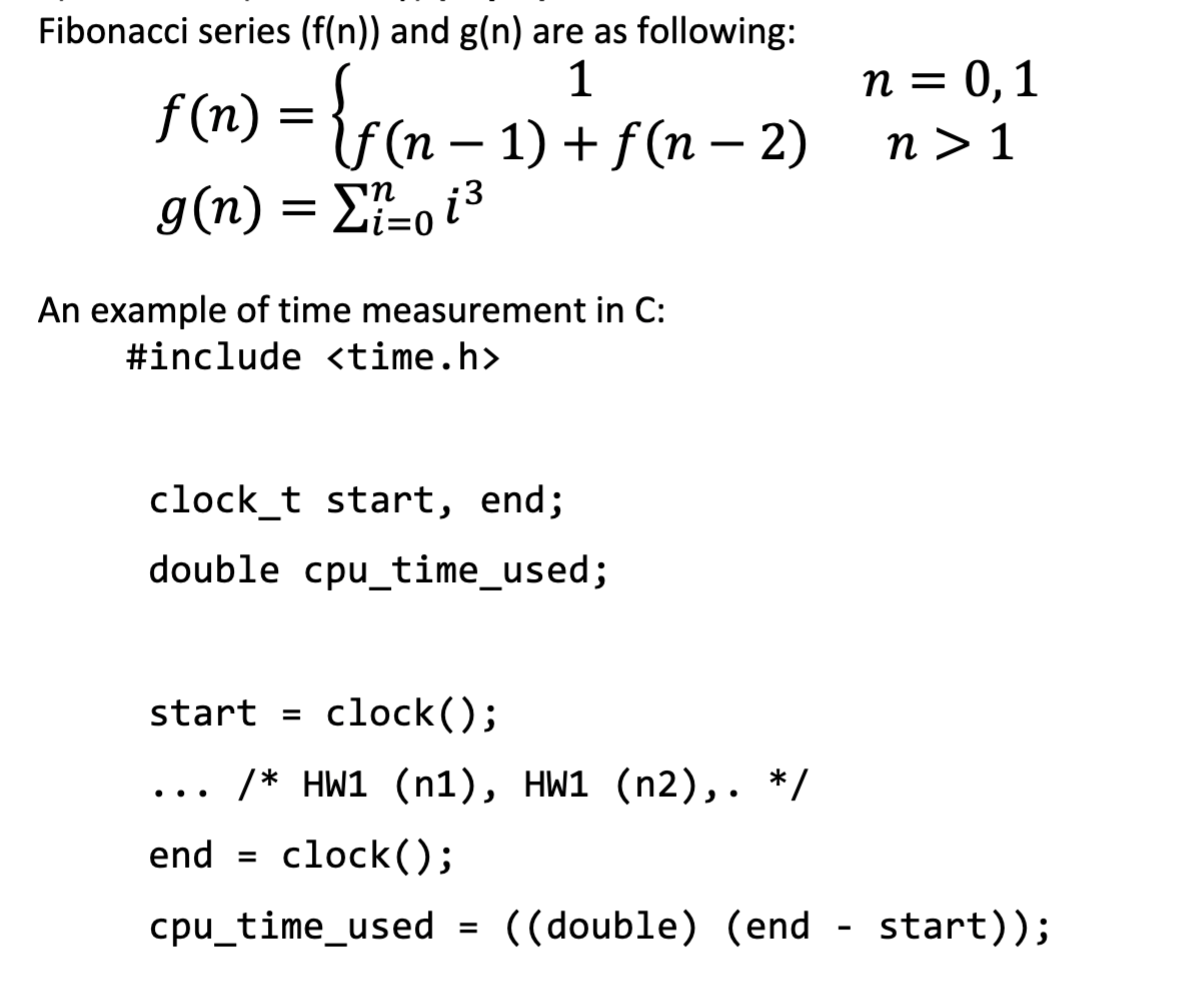Develop a piece of code for following four cases and measure the processing time of different inputs starting from 1 to 50. Plot your processing time as a graph and explain the differences. A) g(n) (Recursively) B) g(n) (Iteratively) C) Fibonacci (Recursively) D) Fibonacci (Iteratively)
Develop a piece of code for following four cases and measure the processing time of different inputs starting from 1 to 50. Plot your processing time as a graph and explain the differences. A) g(n) (Recursively) B) g(n) (Iteratively) C) Fibonacci (Recursively) D) Fibonacci (Iteratively)
Database System Concepts
7th Edition
ISBN:9780078022159
Author:Abraham Silberschatz Professor, Henry F. Korth, S. Sudarshan
Publisher:Abraham Silberschatz Professor, Henry F. Korth, S. Sudarshan
Chapter1: Introduction
Section: Chapter Questions
Problem 1PE
Related questions
Question
Develop a piece of code for following four cases and measure the processing time of different
inputs starting from 1 to 50. Plot your processing time as a graph and explain the differences.
A) g(n) (Recursively)
B) g(n) (Iteratively)
C) Fibonacci (Recursively)
D) Fibonacci (Iteratively)
PLEASE DO PARTS A B C AND D in C/C++!

Transcribed Image Text:Fibonacci series (f(n)) and g(n) are as following:
1
n = 0, 1
f(1) = {rcn – 1
f(n – 1) + f(n – 2)
n > 1
g(n) = E-o i3
An example of time measurement in C:
#include <time.h>
clock_t start, end;
double cpu_time_used;
start = clock();
/* HW1 (n1), HW1 (n2),. */
..
end
clock();
cpu_time_used =
((double) (end
start));
%3D
Expert Solution
Step 1
Because the g(n) function is not specified in the queries, it is not implemented.
#include <bits/stdc++.h>
using namespace std;
clock_t si, ei, sr, er;
double ctui, ctur; // ctui nad ctur are cpu time use for iteratative and recursive
int fi(int num)
{
int x = 0, y = 1, z = 0;
for (int i = 1; i <= num; i++)
{
z = x + y;
x = y;
y = z;
}
return x;
}
int fibR(int x)
{
if ((x == 1) || (x == 0))
{
return (x);
}
else
{
return (fibR(x - 1) + fibR(x - 2));
}
}
int main()
{
int n = 30;
// Iterative
si = clock();
cout << fi(n) << endl;
ei = clock();
ctui = ((double)(ei - si));
cout << "Time required for iterative: " << ctui << endl;
// Recursive
sr = clock();
cout << fibR(n) << endl;
er = clock();
ctur = ((double)(er - sr));
cout << "Time required for recursive computation: " << ctur << endl;
return 0;
}
Trending now
This is a popular solution!
Step by step
Solved in 3 steps with 1 images

Knowledge Booster
Learn more about
Need a deep-dive on the concept behind this application? Look no further. Learn more about this topic, computer-science and related others by exploring similar questions and additional content below.Recommended textbooks for you

Database System Concepts
Computer Science
ISBN:
9780078022159
Author:
Abraham Silberschatz Professor, Henry F. Korth, S. Sudarshan
Publisher:
McGraw-Hill Education

Starting Out with Python (4th Edition)
Computer Science
ISBN:
9780134444321
Author:
Tony Gaddis
Publisher:
PEARSON

Digital Fundamentals (11th Edition)
Computer Science
ISBN:
9780132737968
Author:
Thomas L. Floyd
Publisher:
PEARSON

Database System Concepts
Computer Science
ISBN:
9780078022159
Author:
Abraham Silberschatz Professor, Henry F. Korth, S. Sudarshan
Publisher:
McGraw-Hill Education

Starting Out with Python (4th Edition)
Computer Science
ISBN:
9780134444321
Author:
Tony Gaddis
Publisher:
PEARSON

Digital Fundamentals (11th Edition)
Computer Science
ISBN:
9780132737968
Author:
Thomas L. Floyd
Publisher:
PEARSON

C How to Program (8th Edition)
Computer Science
ISBN:
9780133976892
Author:
Paul J. Deitel, Harvey Deitel
Publisher:
PEARSON

Database Systems: Design, Implementation, & Manag…
Computer Science
ISBN:
9781337627900
Author:
Carlos Coronel, Steven Morris
Publisher:
Cengage Learning

Programmable Logic Controllers
Computer Science
ISBN:
9780073373843
Author:
Frank D. Petruzella
Publisher:
McGraw-Hill Education